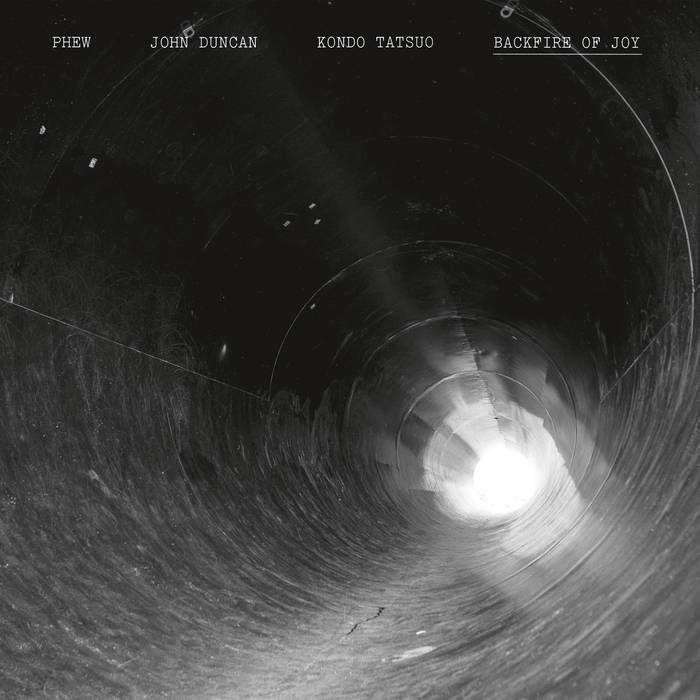 This short release captures the only performance from the trio. Recorded at Hosei University, Tokyo, on John Duncan’s first visit to Japan in 1982, it is a fascinating document both in the context of that visit but also in terms of the creativity, emotion, technique, and improvisation. The participants are meeting here for the first time, although they were familiar with each other’s work through tape exchange. Duncan is finding and processing shortwave radio signals, Tatsuo using piano, tape loops, and synth textures, and Phew vocalizing in English and Japanese. 
This short release captures the only performance from the trio. Recorded at Hosei University, Tokyo, on John Duncan’s first visit to Japan in 1982, it is a fascinating document both in the context of that visit but also in terms of the creativity, emotion, technique, and improvisation. The participants are meeting here for the first time, although they were familiar with each other’s work through tape exchange. Duncan is finding and processing shortwave radio signals, Tatsuo using piano, tape loops, and synth textures, and Phew vocalizing in English and Japanese. 
Black Truffle
On the first of two pieces, "Backfire," the group plunges straight into a tense section dominated by percussive tape loops and Phew’s hybrid chant-song. The effect is of a woman plodding around in metal boots and tinkering on a broken stylophone while absentmindedly reading aloud the labels of electronic appliances. Yet she is actually offering up a kind of liturgy “I already sold you… an electric plug, an electric bell, an electric cooker, an electric kettle, an electric toothbrush, an electric knife...don’t let me sell you... an electric chair.” If this is a serious message against consumerism or the death penalty then the paradoxical mundane glamor in the charming tone and rhythm of her voice elevates it far above dull moralizing. Around the seven minute mark comes a halt and bare smattering of applause gives way to a more mournful flow, with chiming and buzzing synth melodies. Then Phew switches to Japanese and the abrasiveness ratchets up in a thumping swirling climax.
“Backfire" is the more gritty and dissonant of the two pieces but the creative extemporization holds together very well. Pearls are made by grit, and the second, slightly shorter, “Joy” has a soothing and ecstatic atmosphere and more breathing space for the music. There is a wonderful feel to this track, and Duncan’s spluttering bursts of shortwave noise provide perfect contrast to elegaic singing and echoing piano notes. A slightly over-the-top comparison would be stalactites dropping into a moonlit pool of molten silver. Phew manages to sound as if she’s singing backwards.
The tape exchange meant these collaborators will have had an idea of what the others would bring to the performance, but it is intriguing to wonder if some of the audience knew of Duncan's previous events and expected to be challenged by upsetting or confrontational elements. To describe him as notorious would (still) be a massive understatement. It is arguable that this recording only exists because of his self-exile from the USA. He had acquired a reputation for transforming his personal experience into disturbing art and also using disturbing art to trigger transforming personal experiences in others. I refer in particular to the 1980 performance combining two separate but linked events: an audio recording of Duncan allegedly having sex with a cadaver (which he’d obtained by bribing a mortuary assistant in Mexico) and projected photographs of his later vasectomy, presented to a Los Angeles audience as Blind Date - a depiction of male rejection turning into rage and self-punishing loathing. This work made his earlier Scare from 1976, wherein people answered their door to be confronted by a figure (Duncan) in a head mask, pointing and firing a blank-loaded gun in their face before fleeing, seem relatively benign. Blind Date provoked a backlash of such fierce critical and personal opinion that two years later Duncan relocated to Japan as something of a cultural leper.
Backfire of Joy occurred as Duncan was deliberately submerging himself into a new country and the alienating effects of a foreign language. A creative dialogue works here, though, with Phew and Tatsuo at least equal partners in the trio. The record can be enjoyed without an understanding of how Duncan's upbringing and personal history affected his art. Equally, the event did not rely on Reichian breathing exercises or rather “hyperventilation used to create a complete loss of physical and psychic control" or the need for an audience to confront or dissolve the personal armor preventing us from getting in touch with our true nature. That’s just as well, as I won’t be shedding my armor any time soon - at least not the visor and codpiece.
Samples can be found here.



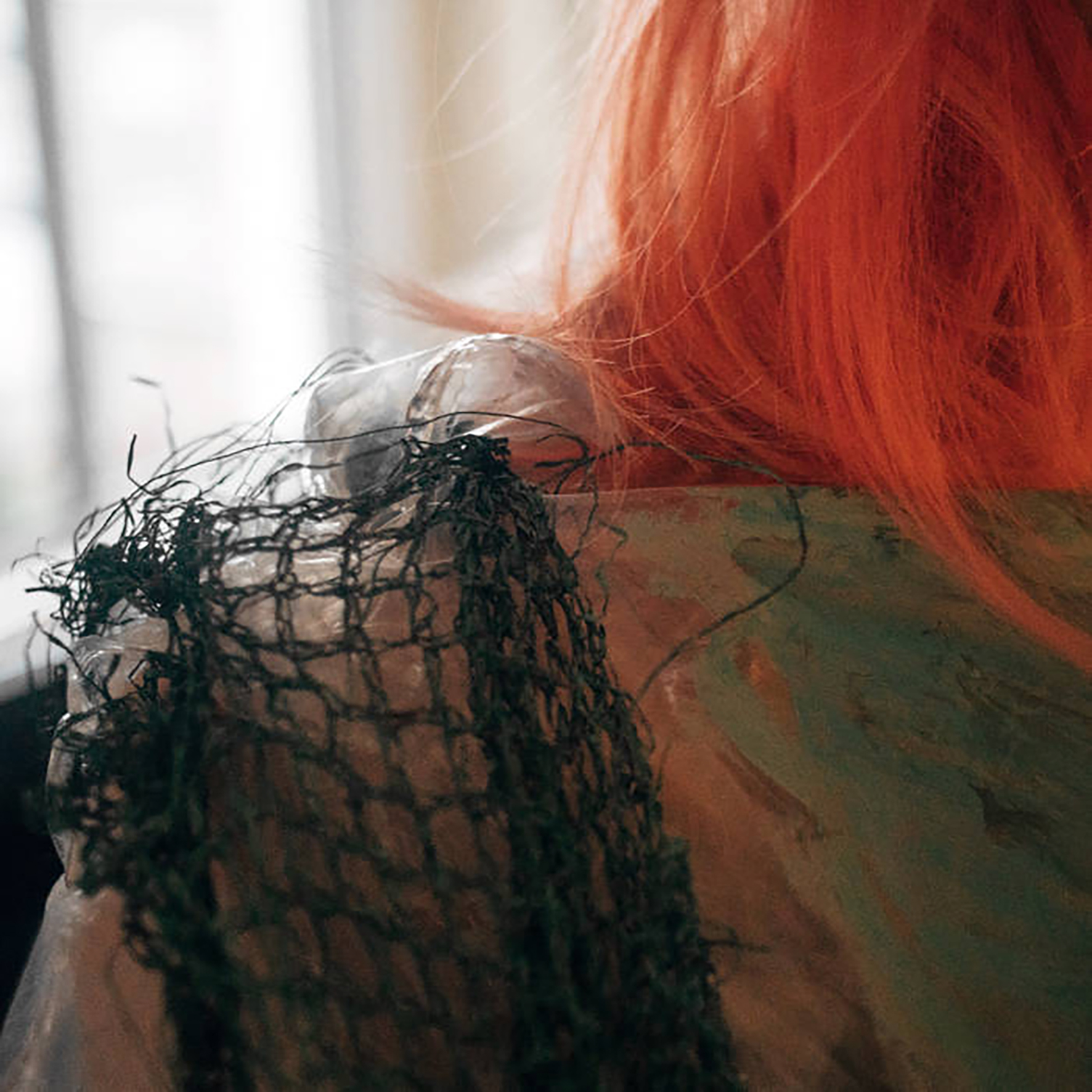
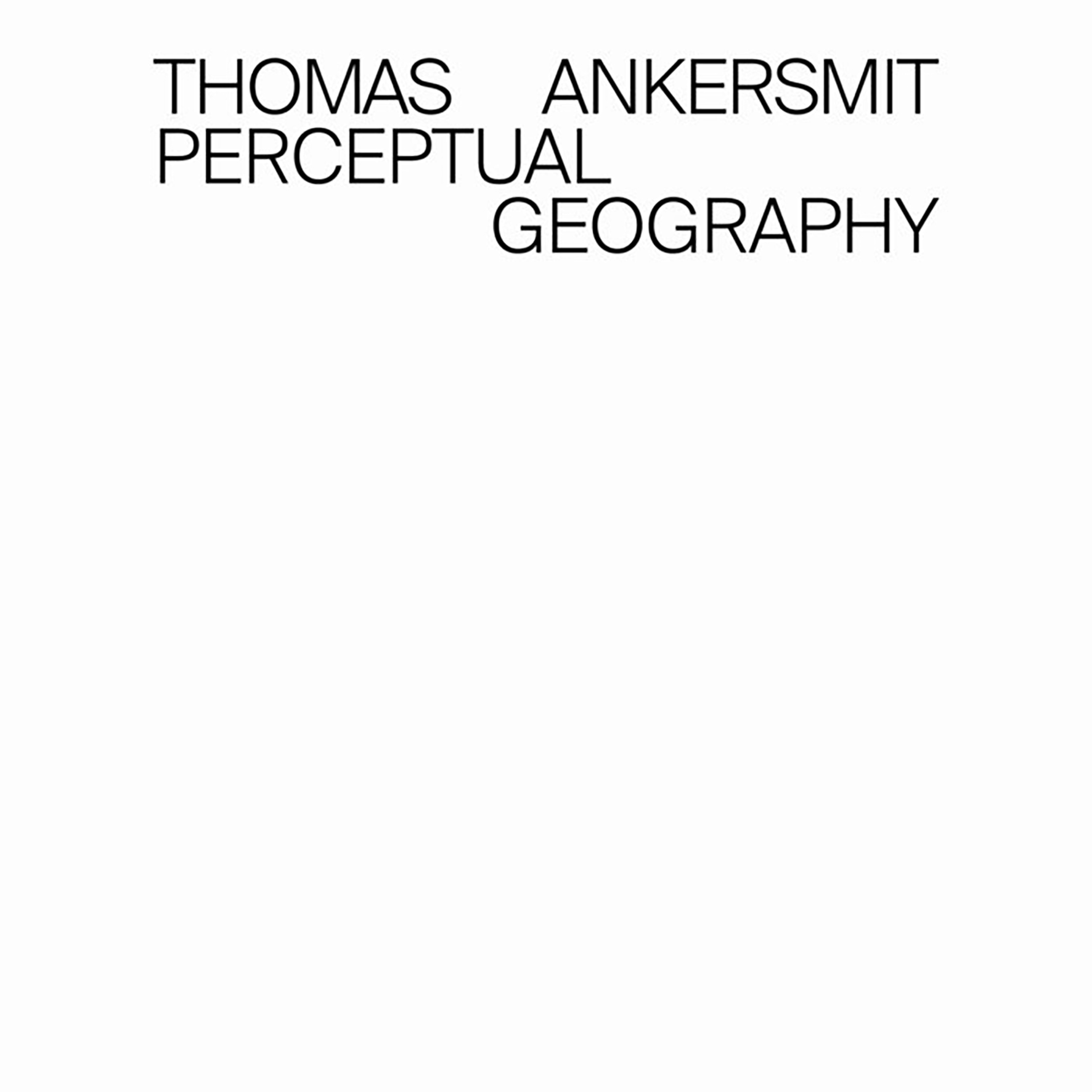 Three years after the mesmerizing Homage to Dick Raaijmakers, Thomas Ankersmit is back with yet another bombshell inspired by an underappreciated electronic music visionary. In this case, that visionary is Maryanne Amacher, who also happens to be the person who fatefully introduced Ankersmit to his Serge modular synth. Naturally, the Serge retains its central role from the Raaijmakers album and Ankersmit masterfully wields it again to conjure up another hallucinatory swirl of phantom sounds and strange aural phenomena. The conceptual themes are bit different this time around, however, as Ankersmit explores the ideas laid out in Amacher's "Psychoacoustic Phenomena in Musical Composition: Some Features of a Perceptual Geography" essay. Unsurprisingly, Ankersmit does a stellar job psychoacoustically mapping out his own compelling perceptual geography with this release, but his most striking bit of sorcery actually occurs off the album, as the piece was engineered to trigger otoacoustic emissions, which are "sounds emanating from inside the head, generated by the ears themselves."
Three years after the mesmerizing Homage to Dick Raaijmakers, Thomas Ankersmit is back with yet another bombshell inspired by an underappreciated electronic music visionary. In this case, that visionary is Maryanne Amacher, who also happens to be the person who fatefully introduced Ankersmit to his Serge modular synth. Naturally, the Serge retains its central role from the Raaijmakers album and Ankersmit masterfully wields it again to conjure up another hallucinatory swirl of phantom sounds and strange aural phenomena. The conceptual themes are bit different this time around, however, as Ankersmit explores the ideas laid out in Amacher's "Psychoacoustic Phenomena in Musical Composition: Some Features of a Perceptual Geography" essay. Unsurprisingly, Ankersmit does a stellar job psychoacoustically mapping out his own compelling perceptual geography with this release, but his most striking bit of sorcery actually occurs off the album, as the piece was engineered to trigger otoacoustic emissions, which are "sounds emanating from inside the head, generated by the ears themselves."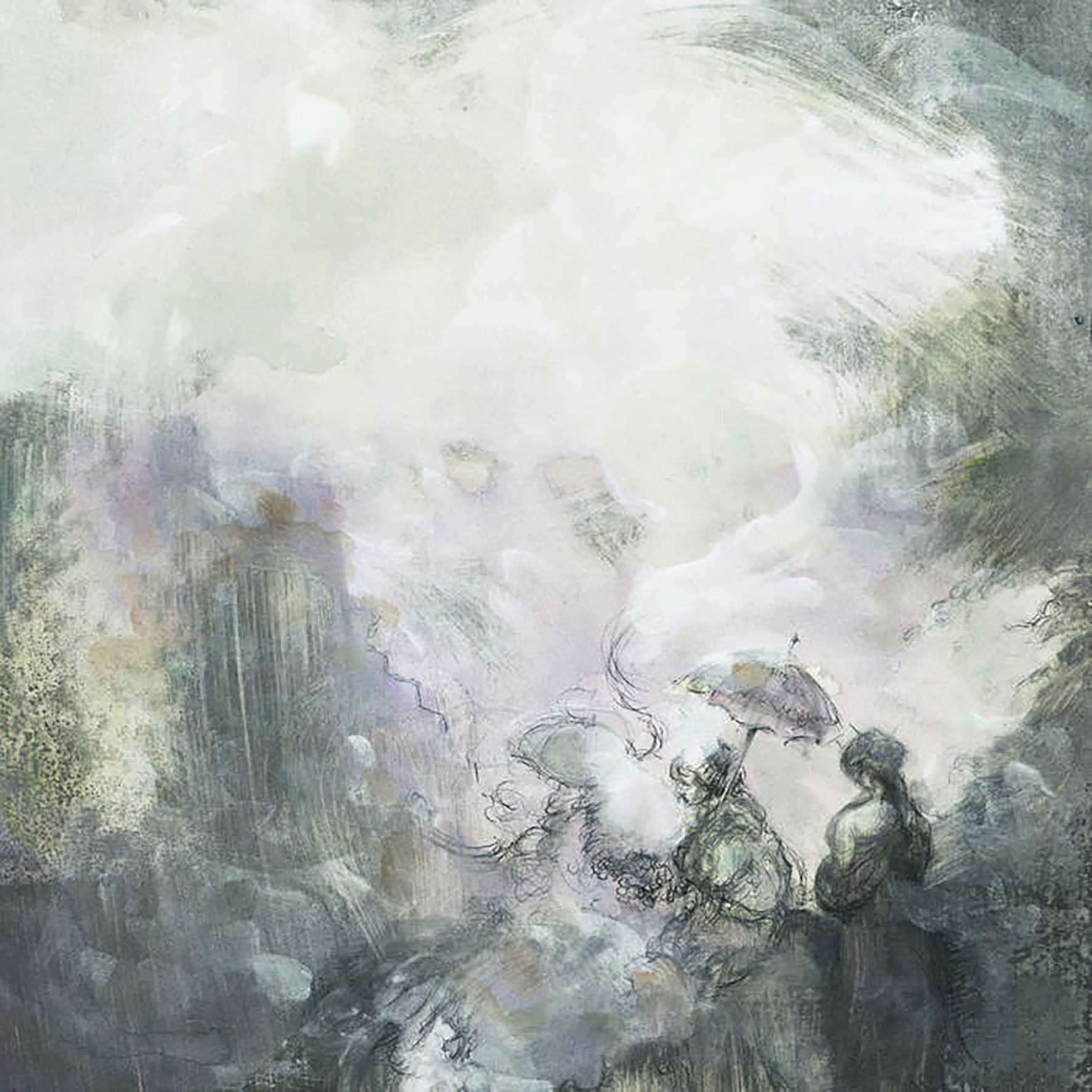 Newly reissued on vinyl (and digitally) with beautiful new artwork, Paradise Lost was originally released as a cassette back in 2019. As is the norm for many Chalk releases, additional details beyond the fact that it exists are quite thin, but this one takes that to an amusing extreme, as the Discogs entry for the original cassette notes "label and artist name are not listed on the release." That said, I believe I can say with moderate certainty that these two longform pieces were recorded on an 8-track reel-to-reel between 2016 and 2018 and that Chalk primarily played a synthesizer. Also, his Ghosts on Water bandmate Naoko Suzuki contributed some very well-hidden vocals and created the artwork for the original tape. To some degree, it makes sense that this album originally surfaced as a very limited-small run tape, as it does not feel like one of Chalk's more significant opuses, but it is quite an enjoyable and interesting release nonetheless. In fact, the title piece feels like legitimately prime Andrew Chalk material to me, though I suspect many longtime fans will be more fascinated by the surprising and divergent "This Pendent World."
Newly reissued on vinyl (and digitally) with beautiful new artwork, Paradise Lost was originally released as a cassette back in 2019. As is the norm for many Chalk releases, additional details beyond the fact that it exists are quite thin, but this one takes that to an amusing extreme, as the Discogs entry for the original cassette notes "label and artist name are not listed on the release." That said, I believe I can say with moderate certainty that these two longform pieces were recorded on an 8-track reel-to-reel between 2016 and 2018 and that Chalk primarily played a synthesizer. Also, his Ghosts on Water bandmate Naoko Suzuki contributed some very well-hidden vocals and created the artwork for the original tape. To some degree, it makes sense that this album originally surfaced as a very limited-small run tape, as it does not feel like one of Chalk's more significant opuses, but it is quite an enjoyable and interesting release nonetheless. In fact, the title piece feels like legitimately prime Andrew Chalk material to me, though I suspect many longtime fans will be more fascinated by the surprising and divergent "This Pendent World."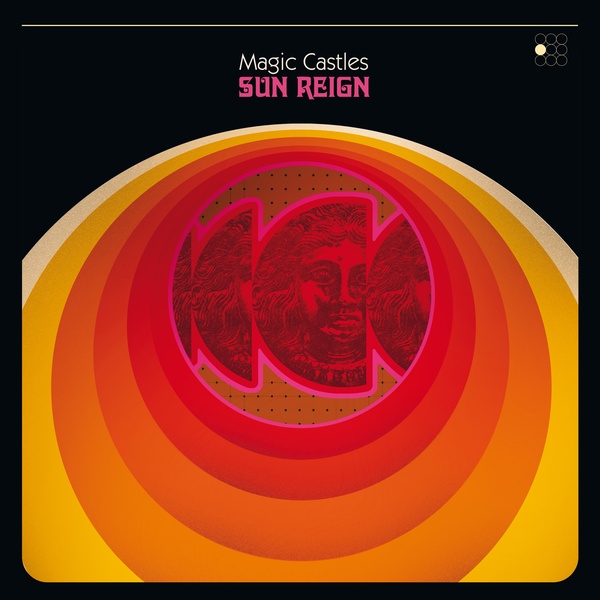 Minneapolis-based Magic Castles make a glorious return with their fourth release on Anton Newcombe's label, weaving together jangly hooks and minor chords and slathering it with fuzz. The release is triumphant in that it was released at all, following the band's 2016 hiatus and songwriter Jason Edmonds' near-fatal car accident in 2019, not to mention contending with a pandemic. Sun Reign is a lush and dreamy masterpiece of layered musical intensities, awash in evocative imagery and heartful melodies.
Minneapolis-based Magic Castles make a glorious return with their fourth release on Anton Newcombe's label, weaving together jangly hooks and minor chords and slathering it with fuzz. The release is triumphant in that it was released at all, following the band's 2016 hiatus and songwriter Jason Edmonds' near-fatal car accident in 2019, not to mention contending with a pandemic. Sun Reign is a lush and dreamy masterpiece of layered musical intensities, awash in evocative imagery and heartful melodies.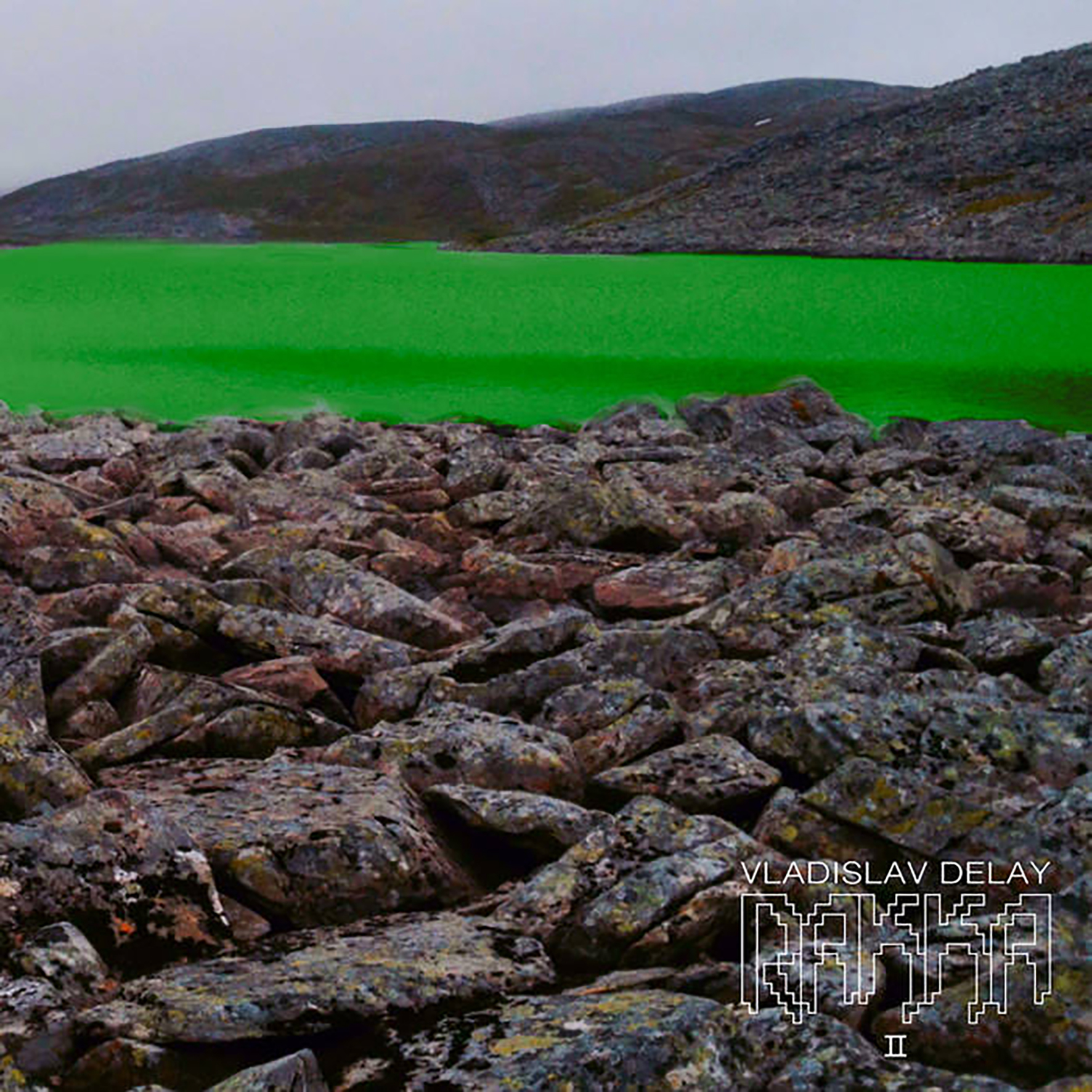
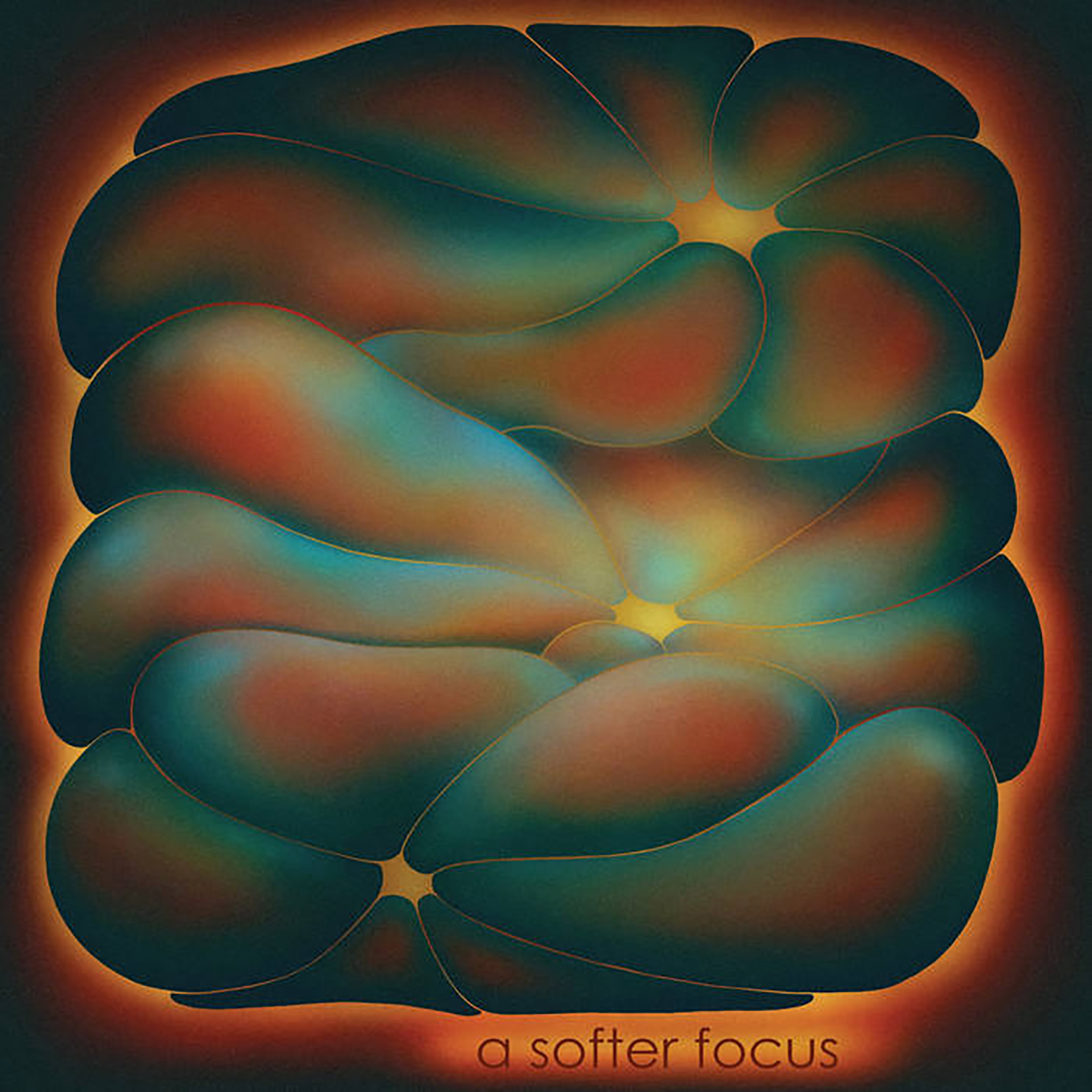
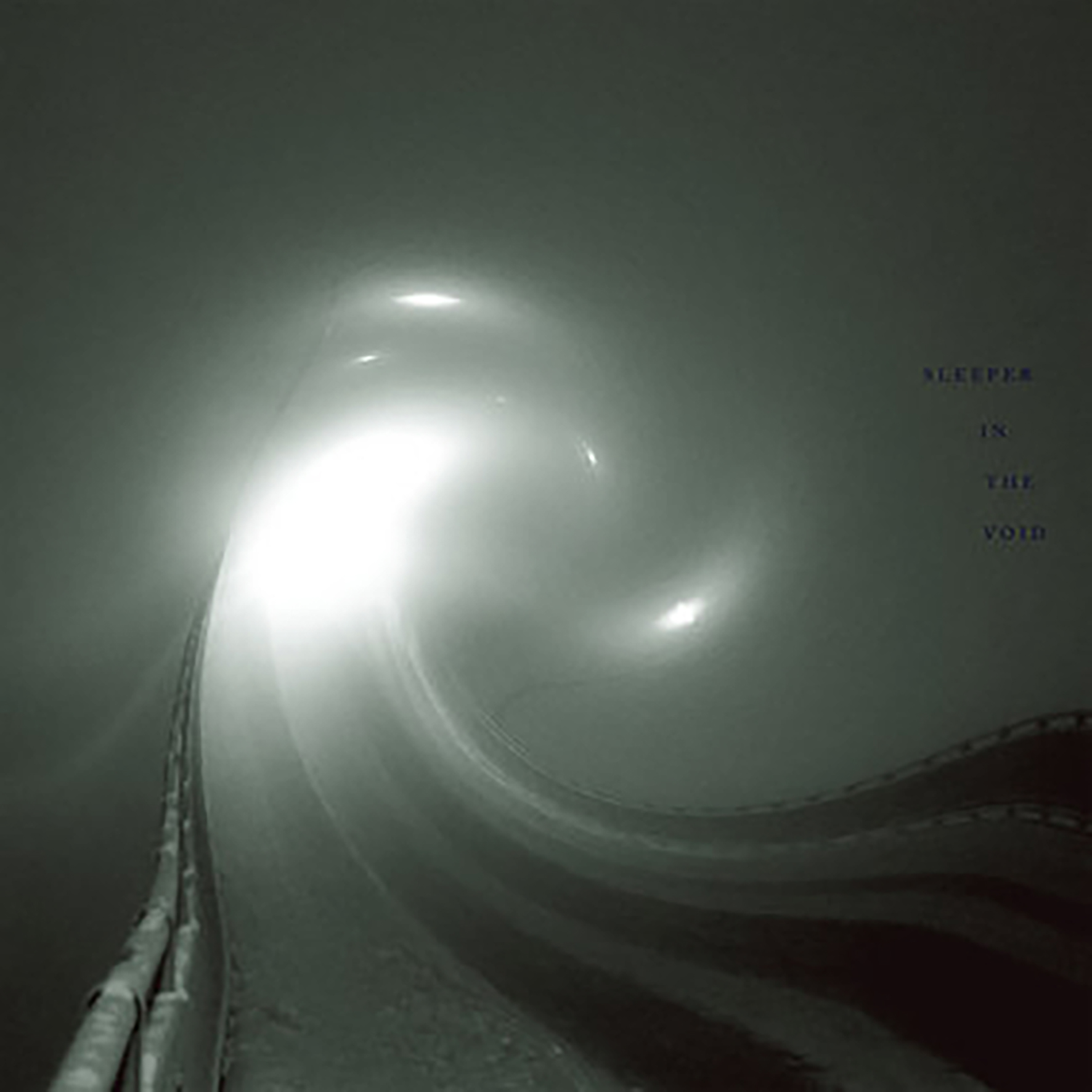
 Forthcoming.
Forthcoming. Important Records' Cassauna imprint has quietly released some woefully underappreciated stunners over the years and the latest one to blindside me is this brief yet near-perfect tape from The Spring Press's Jeff Burch, whose work seems to steadily grow more compelling each time he surfaces. While last year's collaboration with Tres Warren explored similarly heady and timeless "deep psych" territory, Samum Suite takes a very different route to get there, as it was composed and recorded primarily with acoustic instruments at the edge of the Sahara Desert. I am always delighted when acoustic drones, Eastern modalities, and field recordings collide in a pleasing way, but this album feels like it was recorded in an entirely different timeline in which The Theatre of Eternal Music relocated to Morocco and got assimilated into The Master Musicians of Jajouka. Sadly, that is not the timeline I wound up living in, but Samum Suite legitimately feels like the kind of album no one makes anymore. Or maybe ever made. While plenty of artists have borrowed liberally from traditional Middle Eastern sounds in service of their own vision, Burch seems to have achieved full ego death and dissolved into the streets of Morocco only to re-emerge with a beautifully crafted collage that replays his experiences as a hypnotic swirl of sensory impressions.
Important Records' Cassauna imprint has quietly released some woefully underappreciated stunners over the years and the latest one to blindside me is this brief yet near-perfect tape from The Spring Press's Jeff Burch, whose work seems to steadily grow more compelling each time he surfaces. While last year's collaboration with Tres Warren explored similarly heady and timeless "deep psych" territory, Samum Suite takes a very different route to get there, as it was composed and recorded primarily with acoustic instruments at the edge of the Sahara Desert. I am always delighted when acoustic drones, Eastern modalities, and field recordings collide in a pleasing way, but this album feels like it was recorded in an entirely different timeline in which The Theatre of Eternal Music relocated to Morocco and got assimilated into The Master Musicians of Jajouka. Sadly, that is not the timeline I wound up living in, but Samum Suite legitimately feels like the kind of album no one makes anymore. Or maybe ever made. While plenty of artists have borrowed liberally from traditional Middle Eastern sounds in service of their own vision, Burch seems to have achieved full ego death and dissolved into the streets of Morocco only to re-emerge with a beautifully crafted collage that replays his experiences as a hypnotic swirl of sensory impressions.
